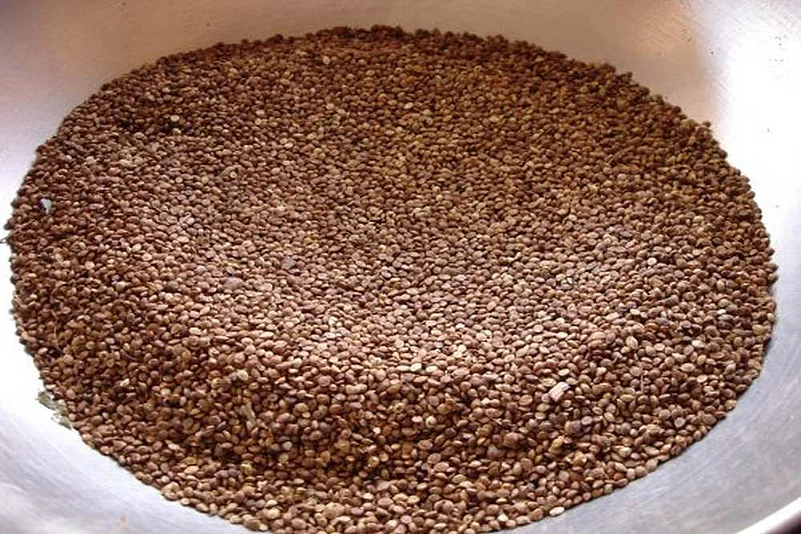Barnyard millet is grown in the hilly areas widely in hilly regions of Uttarakhand. Also known as shyama in Bengali, moraiyo in Gujarati, sanwa rice in Hindi, oodalu in Kannada, kuthiraivolly in Tamil and udalu in Telugu, Barnyard millet tastes almost like broken rice when cooked. The millet is tiny, white, round grain, bigger in size than suji (semolina).
Below are the health benefits of Barnyard Millet:
-Low in calories: It is a good source of highly digestible protein and is least caloric dense compared to other cereals. Almost, one serving of barnyard millets (25g, raw) contains 75-83 calories and 1.5-1.9g of protein.
Advertisement
-Low in glycemix index: The carbohydrate content in Barnyard Millet is quite low. Hence it can be recommended for patients with cardiovascular disease and type 2 diabetes.
-Dietary fiber: It contains good amount of both soluble and insolube fiber. The content of fiber in this millet is highest compared to other millets; it is as high as 12.6% including soluble (4.2%) and insoluble (8.4%) fractions. It thus helps in preventing constipation, excess gas, bloating and cramping.
-Gluten free: Like all millets, barnyard millet is also gluten-free.
-Great source of iron: Some of its varieties have high amount of iron (18.6 mg in 100g of raw millet) which is the richest amongst all millets and cereal grains.
Advertisement
Barnyard Millet in diet:
It can be served as porridge or Kheer to six to eight-month-old babies, and as cheela, dosa, idlis for children above one year. The flour is not easily available in the market, but you can grind it at home. Whole barnyard millets are commonly used to prepare upma, khichdi and pulav.
Kodo Millet
Kodo millet is believed to have been domesticated in India some 3,000 years ago. It is found in the tropical and sub-tropical regions. The fiber content of the whole grain is very high, and the millet contains high amount of protein.
Health Benefits:
•Regular consumption of Kodo Millet is beneficial for postmenopausal women suffering from metabolic diseases like cardiovascular disease, high blood pressure and high cholesterol levels.
•It helps to hydrate your colon and prevent constipation.
•Controls your blood sugar.
•Contains a high amount of lecithin which is excellent for strengthening the nervous system.
•Rich in photo chemicals, phytates- reduces cancer risk.
•Useful in the treatment of inflammation, hemorrhages and general debility.
Kodo millet in diet:
The flour can be used to make chapattis, idlis, porridge, cheela etc. You can also consume it in the form of khichdi with dal.
(Bipasha Das is a certified health coach and nutritionist. She runs a diet and wellness clinic ‘Sugati’. She has been awarded Most Recommended Nutritionist of the Year 2018-19 by Brands Impact. She has worked with top hospitals, and is a life member of the Indian Dietetic Association and on the panels of renowned corporate houses like Ericsson, GE Power. Bipasha is working with Municipal Corporation of Delhi - Public Health Department( South Zone) as a consultant, and creating awareness programmes on Women and Children Health, Health for Public Health Workers, Office Sedentary Workers etc.
Advertisement
*Answers are based on general queries. Please contact a professional for any personal treatment.)




















